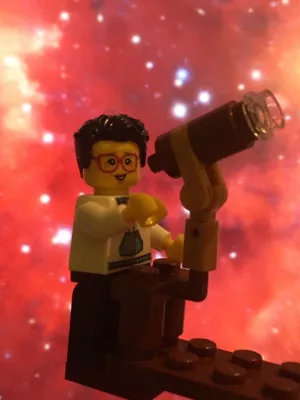
Jens Hoeijmakers
ASSOCIATE SENIOR LECTURER

Exoplanet atmospheres at high resolution through a modest-size telescope : FeII in MASCARA-2b and KELT-9b with FIES on the Nordic Optical Telescope
Author
Summary, in English
Ground-based, high-resolution spectrographs are providing us with an unprecedented view of the dynamics and chemistry of the atmospheres of planets outside the Solar System. While there are a large number of stable and precise high-resolution spectrographs on modest-size telescopes, it is the spectrographs at observatories with apertures larger than 3.5 m that dominate the atmospheric follow-up of exoplanets. In this work we explore the potential of characterising exoplanetary atmospheres with FIES, a high-resolution spectrograph at the 2.56 m Nordic Optical Telescope. We observed two transits of MASCARA-2 b (also known as KELT-20 b) and one transit of KELT-9 b to search for atomic iron, a species that has recently been discovered in both neutral and ionised forms in the atmospheres of these ultra-hot Jupiters using large telescopes. Using a cross-correlation method, we detect a signal of FeII at the 4.5and 4.0level in the transits of MaSCARA-2 b. We also detect FeII in the transit of KELT-9 b at the 8.5level. Although we do not find any significant Doppler shift in the signal of MASCARA-2 b, we do measure a moderate blueshift (3a-6 km s1) of the feature in KELT-9 b, which might be a manifestation of high-velocity winds transporting FeII from the planetary dayside to the nightside. Our work demonstrates the feasibility of investigating exoplanet atmospheres with FIES, and it potentially unlocks a wealth of additional atmosphere detections with this and other high-resolution spectrographs mounted on similar-size telescopes.
Department/s
- Lund Observatory - Has been reorganised
Publishing year
2022-06-01
Language
English
Publication/Series
Astronomy and Astrophysics
Volume
662
Document type
Journal article
Publisher
EDP Sciences
Topic
- Astronomy, Astrophysics and Cosmology
Keywords
- Instrumentation: spectrographs
- Planets and satellites: atmospheres
- Planets and satellites: gaseous planets
Status
Published
ISBN/ISSN/Other
- ISSN: 0004-6361

